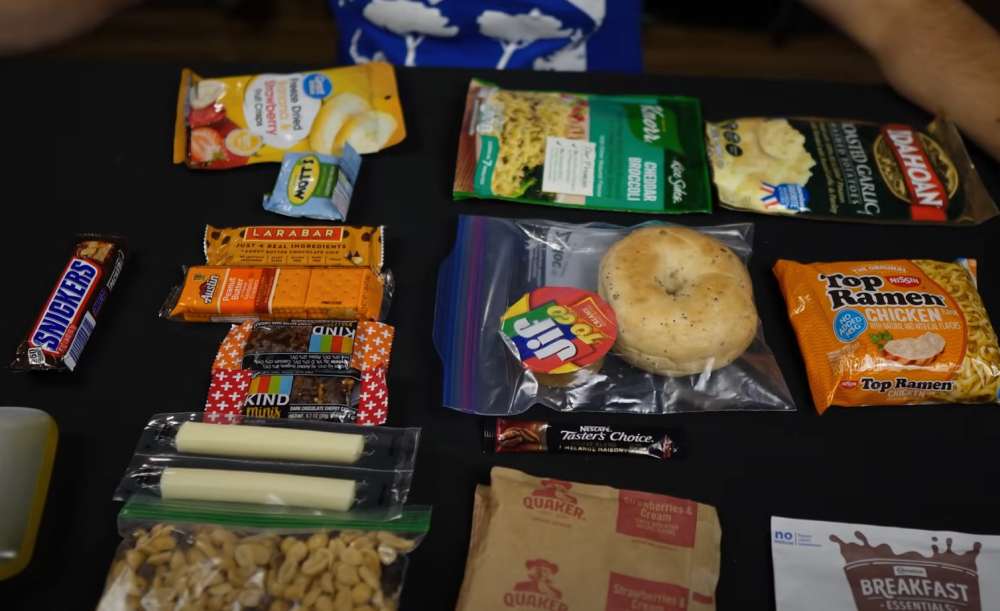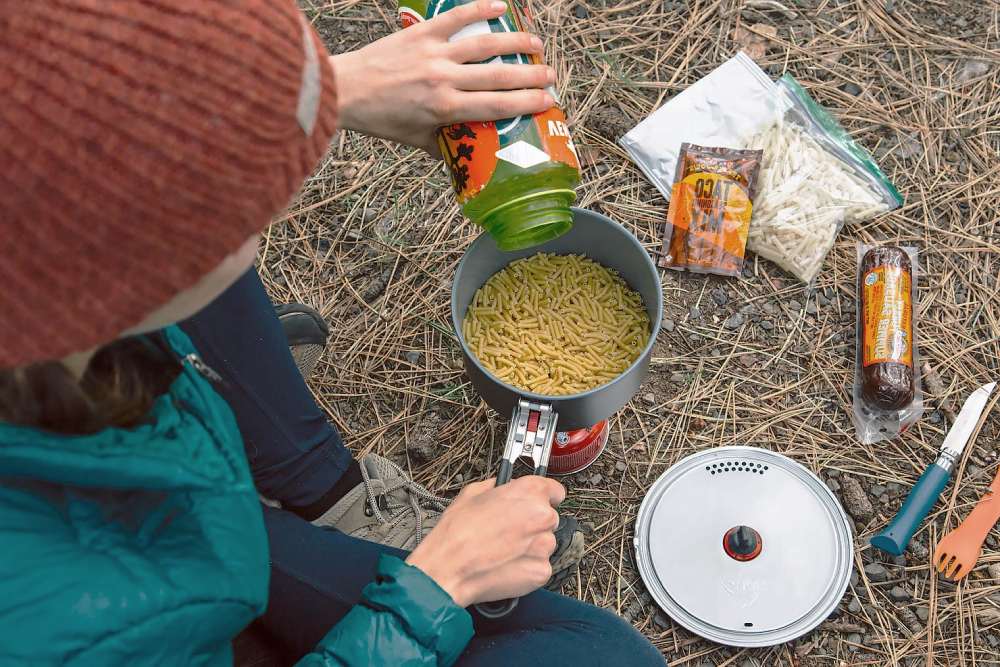Explore nutrient-rich, lightweight backpacking meals with our step-by-step guide and discover the top five meals to energize your next adventure.Embarking on a backpacking adventure requires not only stamina and gear but also the right nourishment to fuel your journey.
When it comes to eating on the trail, heavy, cumbersome meals simply won’t cut it. That’s where our guide to the Best Backpacking Meals comes in, offering lightweight and easy-to-prepare recipes designed to keep you energized without weighing down your pack.
From understanding the essentials of nutrient-rich foods to step-by-step meal preparation and ingenious packing tips, this article delivers everything you need to know to transform your trail dining experience. Dive into our top ingredients and discover five of the best backpacking meal recipes that are both delicious and practical, ensuring you have the sustenance to conquer even the toughest terrains.
Table of Contents
Introduction to Backpacking Meals
When planning a backpacking trip, one of the crucial aspects to consider is nutrition. Backpacking meals differ significantly from typical daily meals because they require special consideration for weight, nutritional value, and ease of preparation. This section introduces the concept of backpacking meals and highlights why choosing the best backpacking food is essential for a successful adventure.
Typically, backpacking meals are designed to be lightweight backpacking meals and easy backpacking meals, ensuring that they can be carried without adding significant weight to your pack. Moreover, they need to be simple enough to prepare with minimal cookware, often just a small stove or even no-cook options, to conserve both time and fuel resources during the trip.
A great backpacking meal not only provides the necessary energy and sustenance for vigorous activities but also serves as a morale booster after a long day on the trail. Texture, flavor, and variety are also critical components, as they help combat palate fatigue and make the eating experience enjoyable, an often overlooked aspect of backpacking.
Understanding what constitutes effective backpacking meals will aid in planning your food needs accurately and ensure that you remain energized and delighted throughout your journey. The following sections will delve deeper into essential nutrients, top ingredients, and detailed recipes that fulfill these criteria.
Essentials of Nutrient-Rich Backpacking Meals
When planning backpacking meals, it’s crucial to focus on nutrient density to sustain energy levels without weighing down your pack. A well-rounded backpacker’s diet includes a mix of macronutrients – carbohydrates, proteins, and fats – along with essential vitamins and minerals to support overall health and stamina during strenuous hikes.
Carbohydrates are key for quick energy. Opt for whole grains like quinoa or couscous, which are also light and easy to pack. Proteins are essential for muscle repair and can be sourced from dried meats, nuts, or high-protein grains like lentils. Fats, though denser in calories, should be included in moderation to add flavor and energy, with options like nuts, seeds, and avocados.
Micronutrients should not be overlooked. Magnesium, potassium, and calcium can help prevent cramps and play vital roles in muscle and nerve function. Dried fruits and nuts, or a lightweight multivitamin supplement, can help fill any nutritional gaps in your backpacking meals.
Hydration is another critical aspect. Including meals that can double as soups or stews will aid in maintaining hydration levels. Spices and salty seasonings not only enhance flavor but also replenish lost electrolytes.
Considering food safety and preservation is paramount. Opt for ingredients that are less perishable such as smoked or dried meats, hard cheeses, and freeze-dried vegetables. Always ensure that your food is stored in water-proof containers and consider meal timing to use perishable items earlier in your trek.
Equipping your backpack with nutrient-rich backpacking meals not only provides the necessary fuel for your adventures but also enhances your overall experience in the great outdoors.
Top Ingredients for Lightweight Recipes
Choosing the right ingredients is crucial for preparing lightweight backpacking meals that are both nutritious and easy to carry. Here are some top ingredients that should make it into your pack:
- Dehydrated Vegetables: Carrots, peppers, tomatoes, and onions are great for adding flavor and nutrients without the weight.
- Whole Grains: Quinoa, couscous, and instant rice offer essential carbohydrates and are quick to cook.
- Legumes: Pre-cooked, dehydrated beans and lentils provide protein and fiber, important for sustained energy on the trail.
- Nuts and Seeds: Almonds, sunflower seeds, and chia seeds are calorie-dense and rich in healthy fats and proteins.
- Seasoning Mixes: Carry small amounts of dried herbs and spice blends to enhance the taste of your backpacking meals.
- Powdered Eggs: An excellent source of protein, they are versatile and can be used to make breakfast scrambles or added to other meals.
- Jerky: Beef, turkey, or vegan jerky are excellent for a quick protein boost and can be eaten alone or added to other dishes.
By selecting the right combination of these ingredients, you can ensure that your meals will not only be easy backpacking meals but also satisfying and energizing for your adventures.
Step-by-Step Guide to Preparing Backpacking Meals
Creating backpacking meals that are both lightweight and nutritious requires careful planning and preparation.
 Pin
Pin
Here’s a practical step-by-step guide to help you prepare easy backpacking meals that won’t weigh you down on your adventures.
Total time: 15 minutes
Selecting Your Ingredients:
Begin by choosing high-energy, lightweight ingredients. Ideal options include dehydrated vegetables, grains like couscous or instant rice, smoked or dried meats, and spices for flavor. Focus on a balance of proteins, carbohydrates, and fats to sustain energy levels.
Pre-Measurement and Mixing
Measure out each ingredient based on the number of servings needed. This step is crucial for keeping your pack light. Mix dry ingredients for each meal and pack them in separate, labeled bags.
Adding Flavor
Don’t skimp on taste. Pack small amounts of spices or seasonings in mini zip-lock bags to enhance the flavor of your meals. Consider pre-mixing all spices at home to save time and space.
Packing Techniques
Utilize vacuum sealing or tight packing to reduce bulk and protect your ingredients from moisture and pests. Each meal packet should be compact and easy to access.
On-Trail Cooking
When ready to eat, simply add water — preferably hot — to your meal bag. If needed, let it soak for a few minutes to rehydrate fully. If you have a portable stove, bring it to a simmer to enhance the texture and flavor of your meal.
Cleanup Tips
Use biodegradable soap to clean your utensils and cookware. Always adhere to Leave No Trace principles, packing out any garbage, including used meal bags.
Estimated Cost: 30 USD
Supply:
- Ingredients (dried pasta, oats, canned beans, rice, nuts, etc.)
- Portable stove or campfire setup
- Water purification tablets or filter
- Reusable food containers or bags
- Cooking utensils (spork, lightweight pot, etc.)
- Seasoning packets (salt, pepper, spices)
Tools:
- Portable stove
- Cooking pot
- Knife or multi-tool
- Food containers or ziplock bags
- Lighter or firestarter
Materials: Lightweight, easy-to-carry foods Reusable plastic or silicone containers Heat-resistant cookware for outdoor use Eco-friendly packaging or storage bags Insulated food pouches
By following this guide, preparing lightweight backpacking meals can be a seamless and enjoyable aspect of your trip planning. Not only will you save weight, but you’ll also guarantee nutritious sustenance that powers your hikes and adventures.
5 Best Backpacking Meals for Your Adventure
Choosing the right backpacking meals can significantly enhance your time in the wilderness. Here are the top five backpacking meals that offer a blend of nutrition, ease of preparation, and light weight, perfect for your next adventure.
- Dehydrated Bean Chili – A filling and protein-rich meal, dehydrated bean chili only requires boiling water to rehydrate. It’s one of the best backpacking food options due to its nutritional value and minimal preparation time.
- Instant Oatmeal – Start your morning right with a light yet energetic breakfast. Pack individual packets, or measure out servings and store them in ziplock bags. A dash of dried fruits or nuts can add flavor and extra nutrients.
- Freeze-Dried Pasta Primavera – A classic favorite, this meal is not only tasty but also one of the most convenient easy backpacking meals. It’s usually ready within minutes of adding boiling water, making it an efficient meal to end a long day.
- Ready-to-Eat Tuna Packets – Lightweight and packed with protein, tuna packets can be eaten straight from the pack or paired with dehydrated meal sides such as instant rice or pre-cooked quinoa.
- DIY Energy Bars – Create your custom energy bars using oats, honey, nuts, and dried fruits. These are excellent for quick snacks and provide a dense calorie intake without much weight, making them ideal lightweight backpacking meals.
Remember, the key to a successful meal plan while backpacking is balancing nutrition with the weight and space limits of your packing. These meals strike that balance effectively, ensuring you’re well-fed and ready to tackle your hikes!
Packing Tips: Optimizing Space and Weight
When preparing for a backpacking trip, efficient packing is key to ensuring you can traverse trails comfortably and safely. Optimizing space and managing the weight of your backpacking meals should be a priority. Here are practical tips to help you pack effectively.
- Use Multi-Purpose Ingredients: Select ingredients that can be used in multiple recipes. For example, dried beans can be used in stews, soups, and salads. This reduces the variety of ingredients needed and saves space.
- Vacuum Seal Your Food: Vacuum sealing your meals not only preserves them longer but also compresses them, taking up less space in your backpack. It’s particularly useful for lightweight backpacking meals.
- Choose Dehydrated over Canned: When selecting ingredients or pre-packed meals, opt for dehydrated options. They are significantly lighter and take up less volume than their canned counterparts.
- Plan Meal Portions: To avoid carrying excess food, calculate the exact number of meals you’ll need. Pre-calculate portions for each meal to ensure you carry only what you require.
- Repackage to Reduce Bulk: Remove any excess packaging and repackage your meals into zip-lock bags or reusable silicone bags. This not only reduces weight but also decreases the volume of trash you must carry out.
- Layer Your Food: When packing your backpack, lay the heaviest and least used items at the bottom. Place your easy backpacking meals near the top or in side pockets for easy access during breaks.
By strategically planning what and how you pack your best backpacking food, you can minimize the physical burden and maximize the enjoyment of your adventure. Every ounce saved is energy conserved for appreciating the great outdoors.
